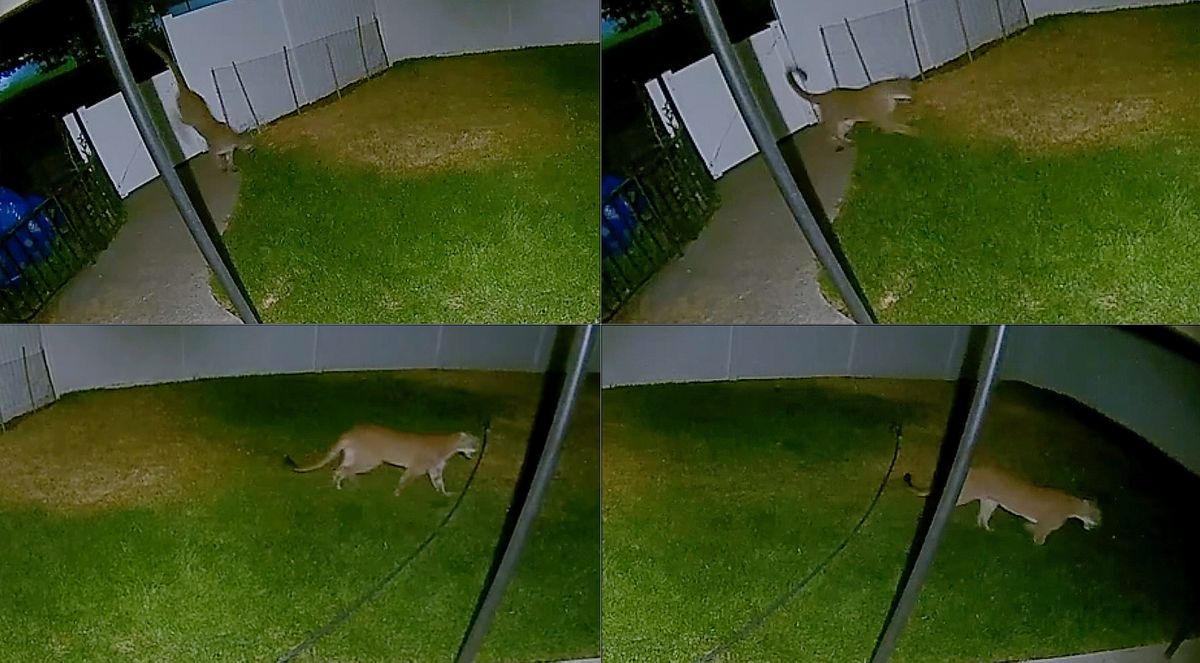Backyard cougar catches attention of Manito residents: ‘I just hope it makes its way home’

On Wednesday at 4:12 a.m., Nicole Reilly’s Ring camera captured an unexpected feline wandering her yard.
It wasn’t your average house cat, though – it was a cougar.
Reilly has lived in her home near 14th Avenue and Grand Boulevard near Manito Park for about five years.
“We get a lot of wildlife: turkeys, raccoons, cats,” she said.
She often gets whiffs of skunk sprays and has occasionally had people wander into her yard. She was expecting something of this nature when she woke up to a noise and checked the Ring camera footage Wednesday morning.
“And then I saw a giant cat jump the fence – and it was not a person,” Reilly said.
Cougars have been known to reside in the High Drive Bluff area, but they’re unlikely to wander into the suburbs of the South Hill, especially all the way to a high-traffic street like Grand Boulevard, according to Staci Lehman, the communications manager at the Washington Department of Fish and Wildlife.
Generally, cougars are “where deer and elk populations are,” said David Ausband, a research wildlife biologist with the U.S. Geological Survey.
Ausband said that cougars are solitary creatures that are “super adaptable, but they need prey populations.”
The cougar could have been hunting other wildlife such as a deer or a turkey when it got lost in the sprawling streets.
Lehman said that they have not received any more sightings of the animal since the original Ring camera video.
“If it’s just a quick in and out, it usually means it came through the area, found better habitat and moved on,” Lehman said.
While wildlife sightings have become more common in urban areas, Lehman accredits a lot of that to the rise of Ring cameras and other security devices.
Lehman said “there’s probably not an actual uptick in how many animals are coming into areas with humans, just more documentation of it.”
Lehman also said that people should not worry and continue to do their usual outdoor recreational activities. She also asks that people not feed wildlife because it can attract unwanted predators, and encouraging wildlife to come into urbanized areas presents risks for the animals.
It’s likely that it just got pulled off course hunting, but there are other possibilities. While the cat was certainly geographically lost, it also could have been emotionally lost.
“Sometimes these young males, their mom will sort of, you know, kind of kick them out. She’s not going to take care of them anymore. And they disperse, and they can go a long way and end up in weird areas,” Ausband said.
“It’d be like if you got dropped onto the moon; like, you wouldn’t really know where to go first. It would take you a while to figure things out.”
Regardless of how the cat came to be in Reilly’s front yard, it has certainly left its mark. Literally.
Muddy pawprints can be spotted on the otherwise shiny white fence.
“I just hope it makes its way home,” Reilly said.